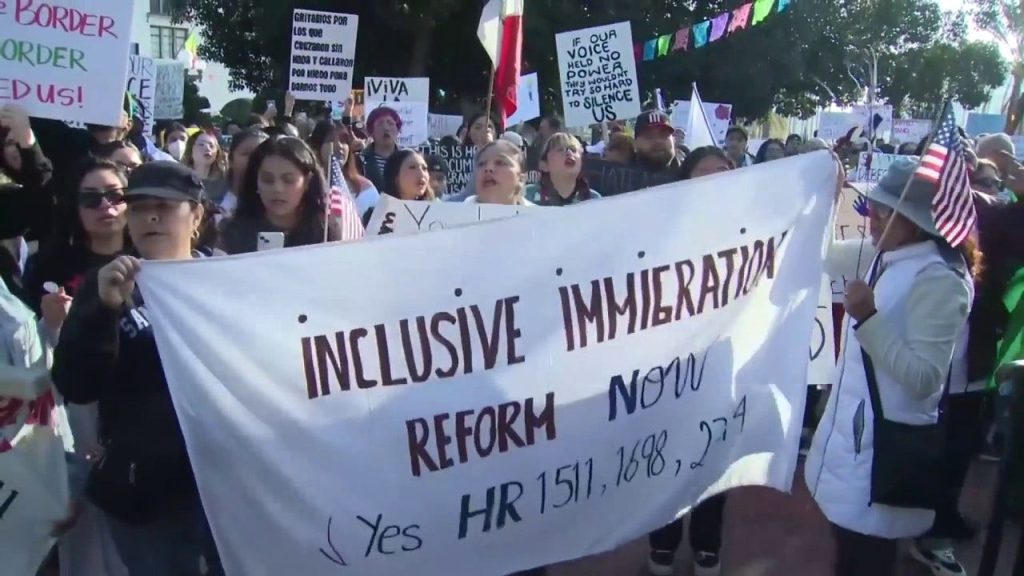On a Sunday morning in Los Angeles, hundreds of protesters descended upon a major freeway, bringing traffic to a standstill. Their demonstration was a direct response to President Donald Trump’s intensified crackdown on illegal immigration. Originating on Olvera Street, the protest quickly swelled, prompting the Los Angeles Police Department (LAPD) to close several streets and issue traffic advisories. The California Highway Patrol (CHP) echoed these warnings, emphasizing the illegality and inherent dangers of using freeways for protests, highlighting the risks to protesters, motorists, and first responders.
The demonstration was visually marked by protesters carrying signs, waving Mexican flags, and vocally opposing Trump’s immigration policies. Slogans such as “No human is illegal on stolen land” and “Fight ignorance, not immigrants” encapsulated the protesters’ sentiments. Meanwhile, law enforcement officers, equipped in riot gear, formed a line against the demonstrators, creating a tense standoff. Social media became a platform for disseminating real-time updates and commentary on the unfolding events. Videos circulated showing alleged acts of vandalism, including graffiti on freeway walls and damage to a vehicle trapped within the throng of protesters. These visuals fueled online debates, with conservative commentators condemning the protesters’ actions and calling for swift intervention by Immigration and Customs Enforcement (ICE).
The protest sparked a flurry of online commentary, particularly from conservative voices. Some characterized the freeway shutdown as a blatant attempt to resist deportation, while others viewed it as a dangerous escalation of civil disobedience. The incident became a flashpoint in the ongoing national debate surrounding immigration policy, with calls for stricter enforcement juxtaposed against arguments for more humane and compassionate approaches. The incident served as a stark illustration of the deep divisions within American society regarding immigration.
The backdrop to this protest was the Trump administration’s aggressive stance on illegal immigration. White House Press Secretary Karoline Leavitt announced the commencement of deportation flights, underscoring the administration’s commitment to enforcing immigration laws. Images of individuals boarding military aircraft were released, accompanied by a strong message emphasizing the consequences of illegal entry into the United States. These actions were further amplified by reports of ICE raids across the country, targeting homes, workplaces, and other locations.
The intensification of immigration enforcement has been met with resistance from Democratic leaders, many of whom have pledged to oppose the Trump administration’s deportation efforts. This clash between federal policy and local resistance sets the stage for potential legal and political battles in the future. The administration defended its actions by asserting its focus on the “worst of the worst” offenders, with plans to send the most violent illegal immigrants to Guantánamo Bay. This declaration further fueled the controversy surrounding the administration’s approach to immigration.
Amidst the escalating tensions, government officials remained largely unavailable for immediate comment. California Governor Gavin Newsom’s office directed inquiries to the California Highway Patrol, while Los Angeles Mayor Karen Bass could not be reached. This lack of immediate official response contributed to the sense of uncertainty and heightened tensions surrounding the protest and its aftermath. The incident underscores the complex challenges surrounding immigration enforcement and the passionate responses it evokes from various segments of society.


